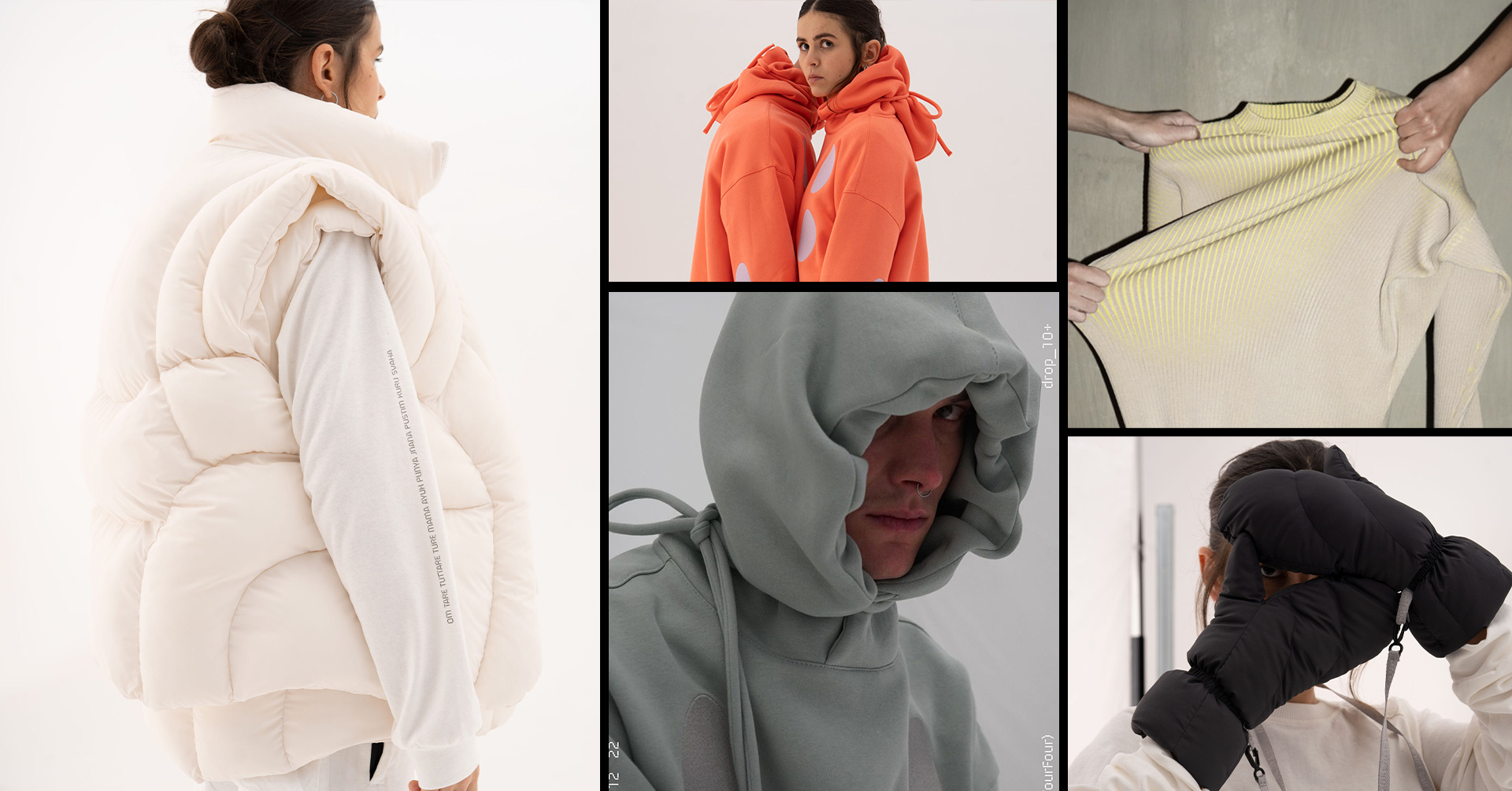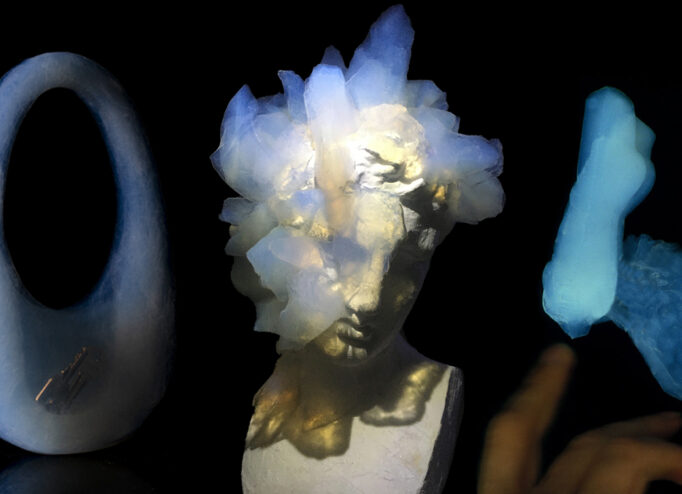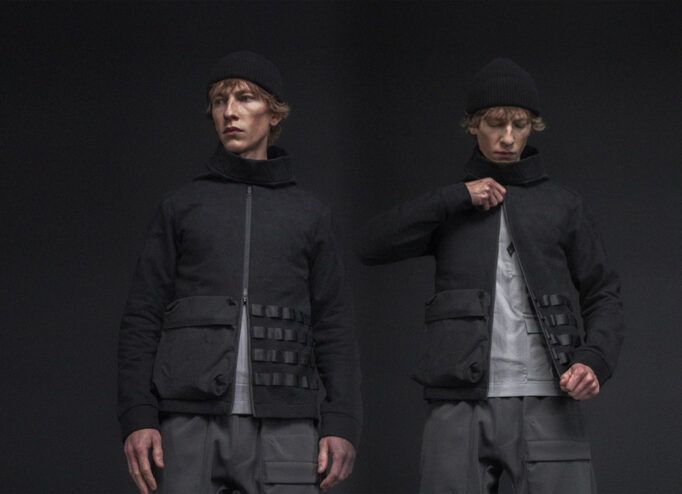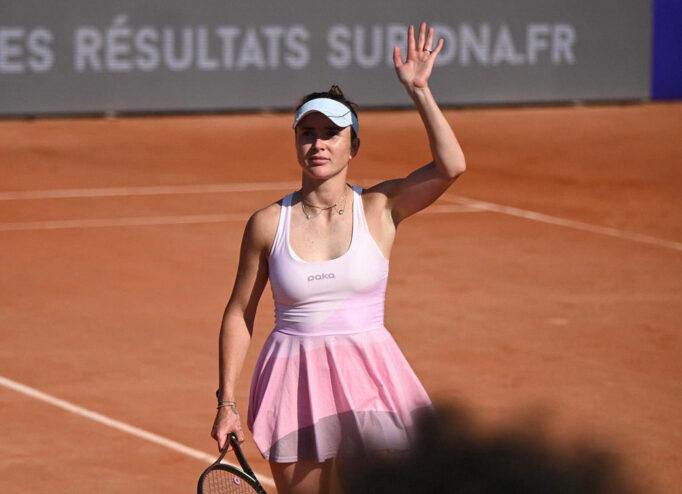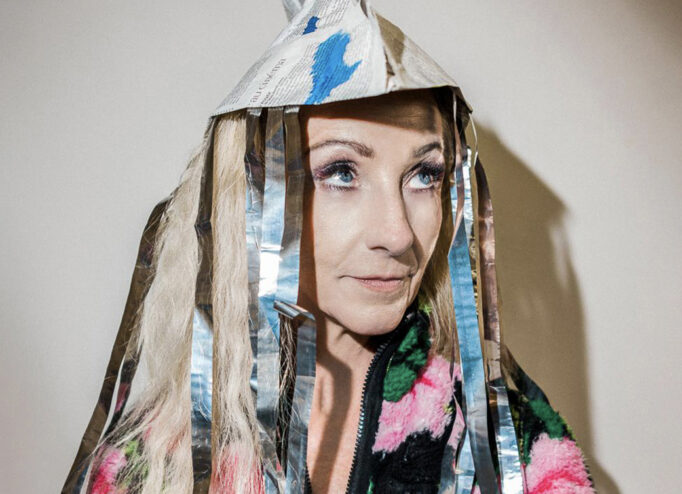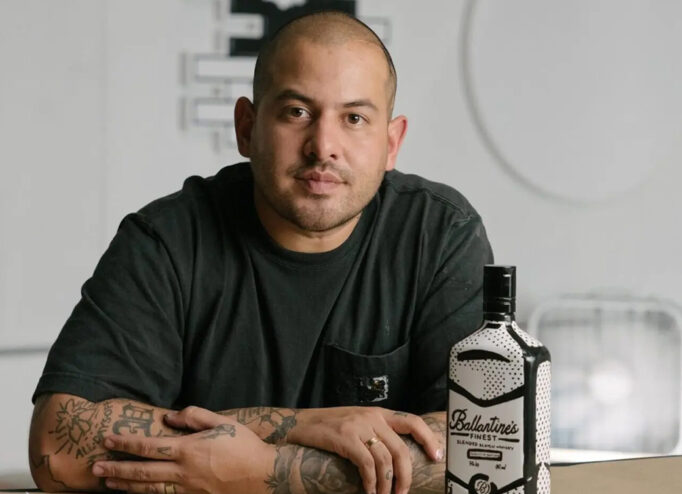The history of the Kyiv brand O(FourFour) began in 2019 with a collection of clothing for water sports and running. However, the team’s constant experiments and Ukrainian reality have made adjustments — the brand’s assortment has expanded, and O(FourFour) clothing can be used to create a total look thanks to the latest drop.v
The brand describes the concept of the new line, created already during the war, with the term «city tourism». The drop includes down vests referring to armored vests, origami cut pants and a sweater made of Italian yarn that shows a green-yellow color while stretching. In general, the collection demonstrates another feature of the brand, namely technology. Making clothes in Ukraine, O(FourFour) work with non-obvious materials and fabrics, such as Yulex, ecological neoprene, from which other brands, including Patagonia, sew clothes.
DTF Magazine met with the creative director and graphic designer of the brand Masha Havrysh and the founder and producer Vita Nozdrachova to ask why O(FourFour) does not participate in fashion weeks and does not appear on the international fashion scene, how to plan the team’s work in different parts of Ukraine with different security situations, why some brands speculate on the war and how the inferiority complex affects the Ukrainian fashion industry
«We affect the environment, and this environment affects us»
— You started out as a brand that made workout clothes, particularly for water sports and running, and in October you released a collection that could be used to create a total look. Did you have the idea of scaling from the beginning, or did it already come up in the process?
Vita: When we started, no one could have imagined that there would be a covid, a war, and so many new things that would constantly change our course. We probably would have continued to create water sports apparel if things had gone the way we planned. There was a serious demand for something we also really liked, the second skin uniforms; that’s the aesthetic we were developing.ммм
We don’t think in terms of ideas to create a total look, but the team has evolved a lot over the course of the brand’s existence.ммм
We affect the environment, and this environment affects us, and we are in Ukraine, where there are four seasons. As much as we don’t want to communicate only through water clothes in winter, we realized that there is a request for our aesthetics, but in a different form, so we were very careful to start adding something new.
We made kimonos last year. Masha’s brother is engaged in jiu-jitsu, and we adapted these kimonos to our style and got a super hit set that people liked: they wore it both at home and outside, styling the pants and top separately.
The last drop is complex from a structural point of view, and every detail is not superfluous or spontaneous, but is as well calibrated as possible. Perhaps when we matured to this challenge, we were able to accept it. The war affected us in such a way that we decided for ourselves to stay. We would create, we weren’t going anywhere; so we sort of allowed ourselves to fantasize to the max.

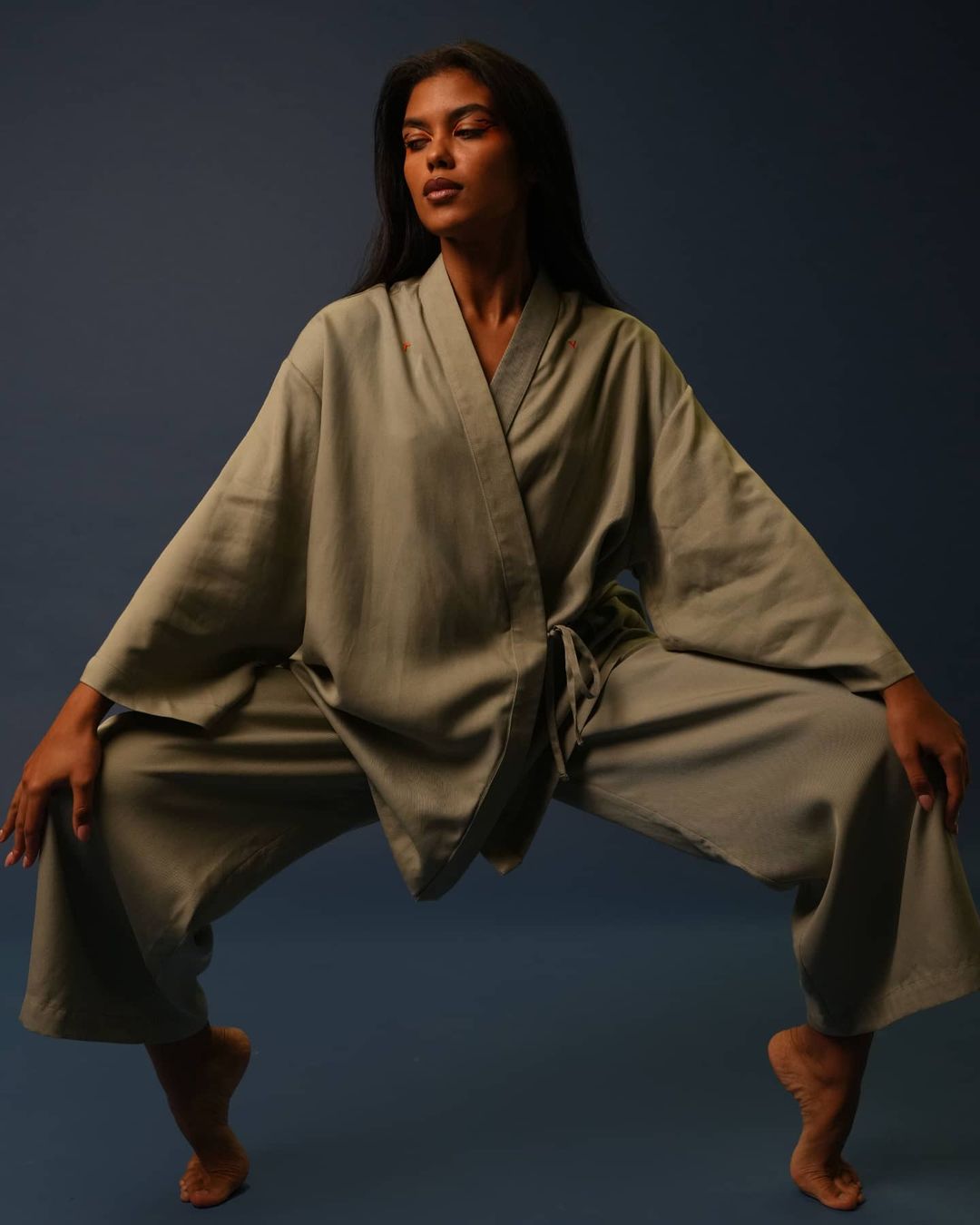
SHH kimono
Masha: It may seem that, for example, the vests that we recently released are completely disconnected from everything we’ve done before, but there is an intrinsic correlation.
Last summer we shot a campaign in which we used an inflatable vest we bought at the beach. We looked at it and realized that we wanted to create a similar down winter construction that would be such a life-saving item. At the time, we didn’t know that there was going to be a war and that this item would have psychological meanings. We made it in such a way that it would go beyond clothes and go into the category of some objects that help and protect.

O(FourFour) Campaign, shot in the summer of 2021

— You design and sew clothes in Kyiv. Is it your own production or production based on another one?
Masha: We work with several productions in Ukraine and with different designers. One of the largest productions in Kyiv is also in the west of Ukraine. For example, for the winter drop, we used a production that specializes more in down clothes. We are comfortable working in this mode because it does not tie our hands, but, of course, we dream of having our own production and an experimental shop that we can fully control.
— Regarding materials. We know that you ask suppliers to provide information about the conditions of fabric production. Is this true? And does this apply to all the materials you work with?
Vita: That’s not quite the right wording. I’ll explain with a basic example. There are fabrics made from recycled materials, such as nylon, and they usually cost more and are more difficult to work with. We decided that we would always choose the best and most modern of what was available. Among recycled and nonrecycled fabrics, we will choose the former if it meets our requirements. It is very important to us that the fabric can serve its owner for a long time.
Of course, we want to influence production technology. Maybe in time we’ll get to the point where we can come up with something in collaboration with fabric manufacturers, but it’s a big scale. For example, at the production facilities where we buy biflex fabric, there are laboratories where adidas and Oysho create fabrics.
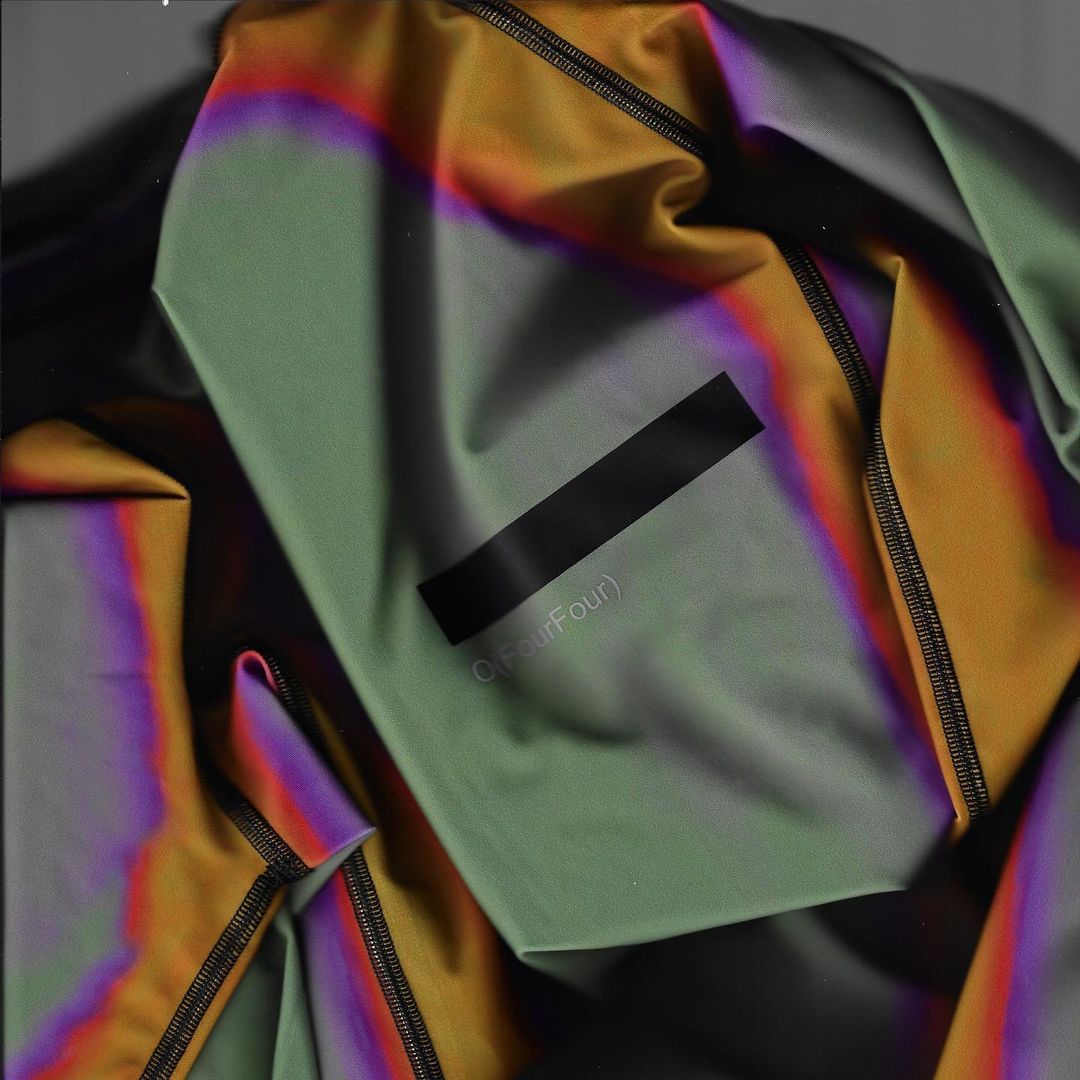
AURA rashguard
But for now, we choose something for ourselves and we are not lazy to look. There is an interesting case: we were sewing suits out of neoprene and then we saw that Patagonia was sewing out of an eco-friendly neoprene called Yulex. We contacted these distributors to order ten pieces of fabric. They told us no one would sell us that little amount. We wrote to Yulex saying that we’re a brand from Kyiv, this is Ukraine, we don’t have an ocean nearby, but we want to make clothes for wakesurfing exactly from Yulex. And they’ve agreed with the distributors to ship exactly as much as we need. Sometimes Yulex tags us, the brand from the banks of the Dnipro, along with seven other global brands, the benchmarks among the surf brands of the world.
Finding and communicating is a big part of the intellectual work; because it’s all very difficult when you don’t have the financial leverage and you can’t come and buy a hundred million of everything, but you ask for some kind of discount, a promo. That’s how we go step by step looking for our solutions.
«War makes you work on another level»
— Your last drop resonated with the audience and caught their attention. What do you think played a role here: the storytelling, the visuals, the technological aspect, or something else?
Masha: All together. And in this case, I think it is the impact of war. If we continue to do this, we don’t allow halftones and we don’t agree to even minimal compromises, so everything is on another level. War makes you work on another level.
Vita: To create this drop, the team was inspired by the people who stayed in Ukraine and with whom we have daily contact.
We had a contractor from Kharkiv who said: «Today our city was bombed, but now we’ll have some coffee and get started». Or our seamstresses, who were desperate to do it all. And when we hadn’t launched the site yet, our programmer was in Kherson; he didn’t have internet, so he had to run around to find it and make the site. We were right there with this strong energy that is now in-country, every step of the way.
Masha: It’s really important that our team is back in Kyiv, in the summer everyone was definitely here. It’s everyone’s internal choice to be here, and I’m sure it affects the result.
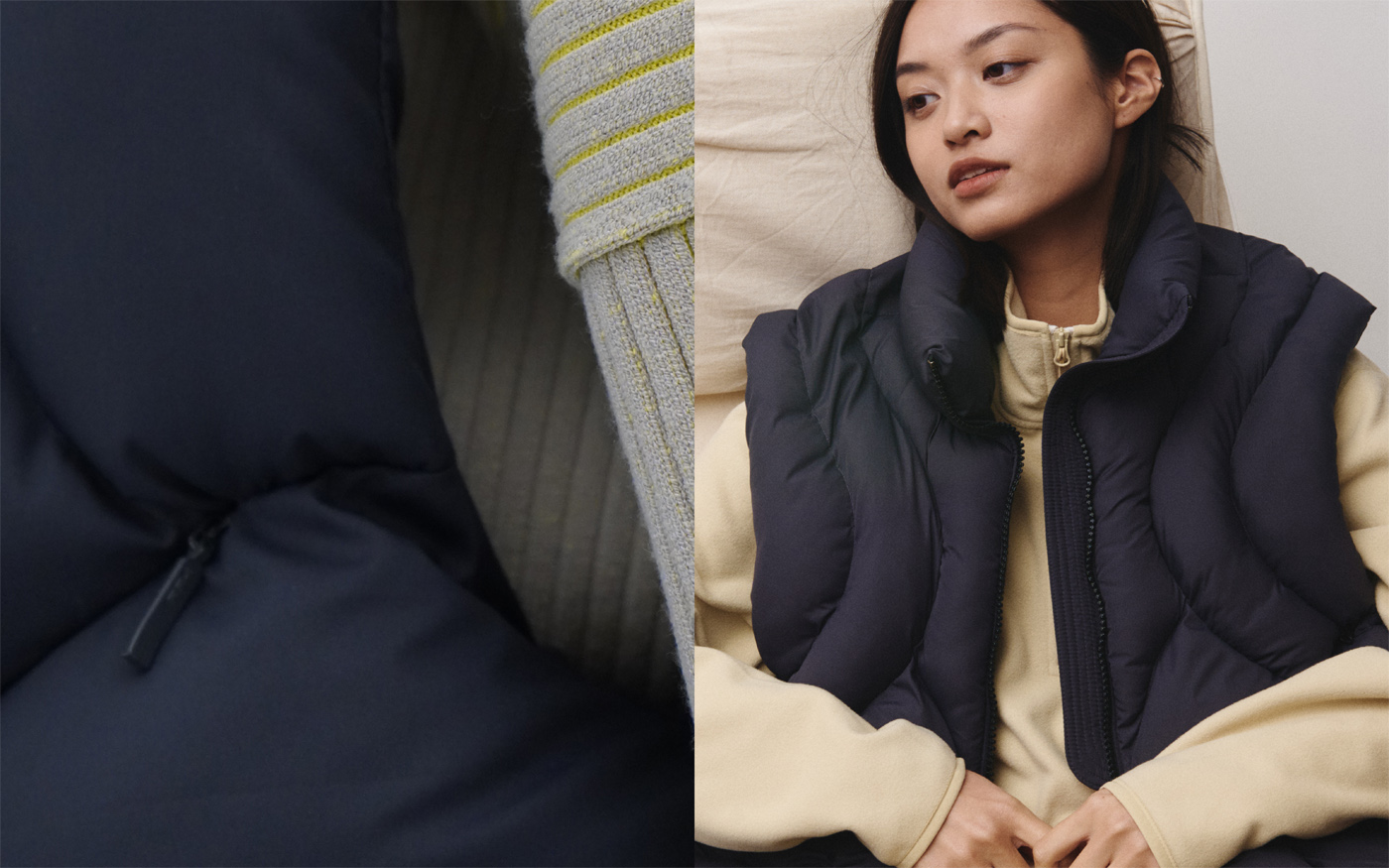

EXTEND Fall/Winter drop
— Ukrainian brands that try to speak out about the situation in Ukraine are sometimes accused of speculating and glamorizing the war, refugees and other related topics. Have you discovered certain rules for yourself about how to communicate through clothing?
Masha: It seems to me that it’s within the team. The ideology of each of us is the same. We understand the position we are in, and we have no self-pity. And when someone profits from it, sloppily or tactlessly uses some things, I think it’s about the level of development and worldview. себе. А коли хтось на цьому наживається, неакуратно або нетактовно використовує якісь речі, думаю, це про рівень розвитку і світосприйняття.
We don’t have this as a communication strategy, but as an extension of how we feel. It’s not artificial, we’ve never even discussed it, because it’s obvious to us. We create items that refer to war in a certain way, because now, unfortunately, this is another layer of our environment, such as the INDRA vest, because it looks like a bulletproof vest and is supposed to protect somehow on a psychological level. But we work carefully with this so as not to offend anyone.
Vita: We have another area within the company, namely corporate orders. We sew clothes for volunteers and the AFU, but we do it quietly. Maybe that’s a mistake, because several times we’ve been told that we don’t talk about the war at all.
But our position is different. We work, we pay taxes, we give jobs in Ukraine, and I’m not just talking about the team, but also about the people we attract to make it all happen. And it’s very important for us to do all this in Ukraine.
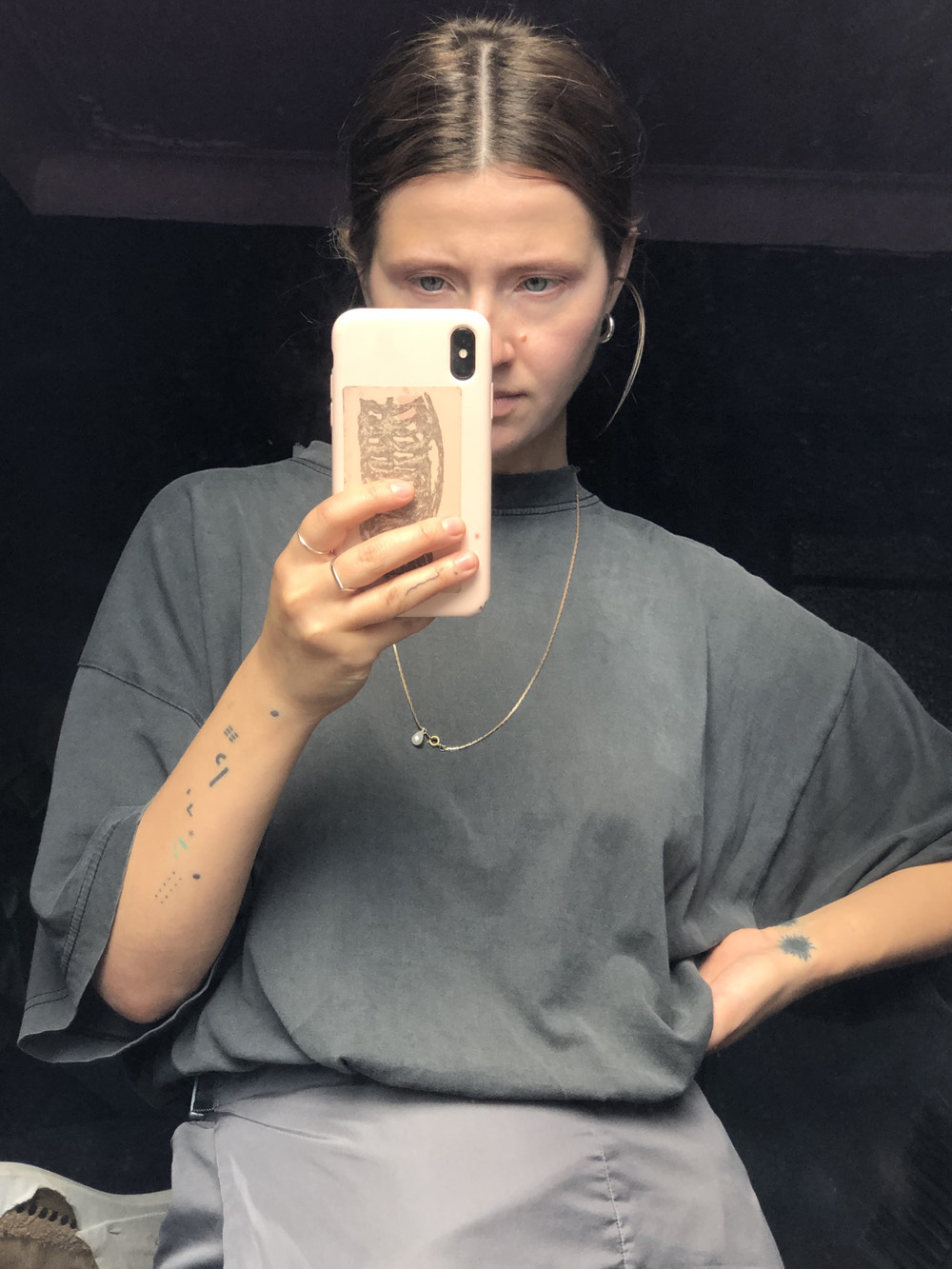
Creative director and graphic designer of the brand, Masha Havrysh
As for the war, we have accepted this stage and realize that the best thing to do now is to keep doing it. I realized that if I wake up, I have light and no threat to life, then we just have to keep working.
Because, for example, our people in other cities can’t do that. We always support each other: if the situation is unstable, the first thing we start our morning with is a message in the chat to find out if everything is okay or if someone needs help. We have a woman working for us who came from Mykolaiv with her son. And if we had an opportunity to take more people like her and adapt them quickly, we would do it.
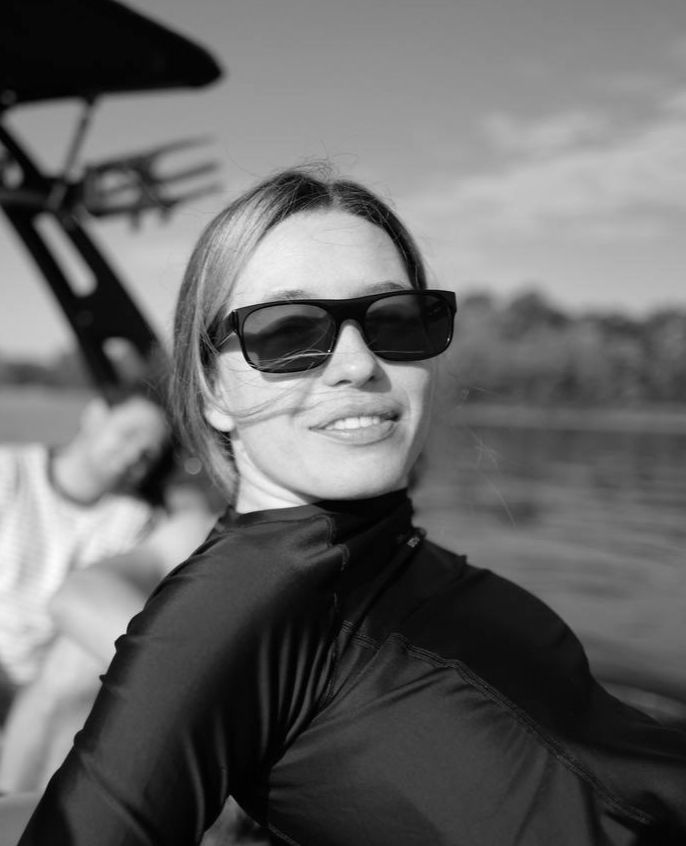
Founder and producer of the brand, Vita Nozdrachova
For us, war is a responsibility to create, because there is such an opportunity. Now we have a lot of orders from other countries that we didn’t have before, namely Korea, Japan, Ireland. I think it’s very cool when foreigners trust us, when they are inspired by us and say they will wait for an order. I think this is how we should be presented to the world: we are an irresistible nation, we are very brave and we show it with our behavior.
Masha: It’s important for us that first of all foreigners think of us like: «How cool is this!» — and then, «Wow, it was also made during the war!». We never wanted the opposite.
«We’re not an online brand, but an offline one»
— Now many Ukrainian brands take part in pop-up events and fashion weeks, but your brand is not represented in Europe in this format. Why?
Vita: We participated in pop-up events in Berlin, because in that city a lot of people respond to the language we speak in our clothes. We will also participate in the festival in Paris. We get a lot of invitations, but it’s very important where and with whom we will be presented and what the audience that will come will be.
Not all of our clothes can be accepted in a format where they’re hanging on a rail and there’s no one to present them.
We are closer to the concept store format, when there is no branching and scattered attention to everything, and it is very important to us to have a person who would explain how to put the clothes on correctly, if we are talking about second skin clothes, and that the customer has an opportunity to try the clothes on, look at him/herself; therefore we choose more point-by-point.
But we’re going to go international and we want to be represented in five or six cities with at least one concept store. We’re not an online brand, but an offline one, so when a person sees or tries on our clothes, it’s a completely different story.
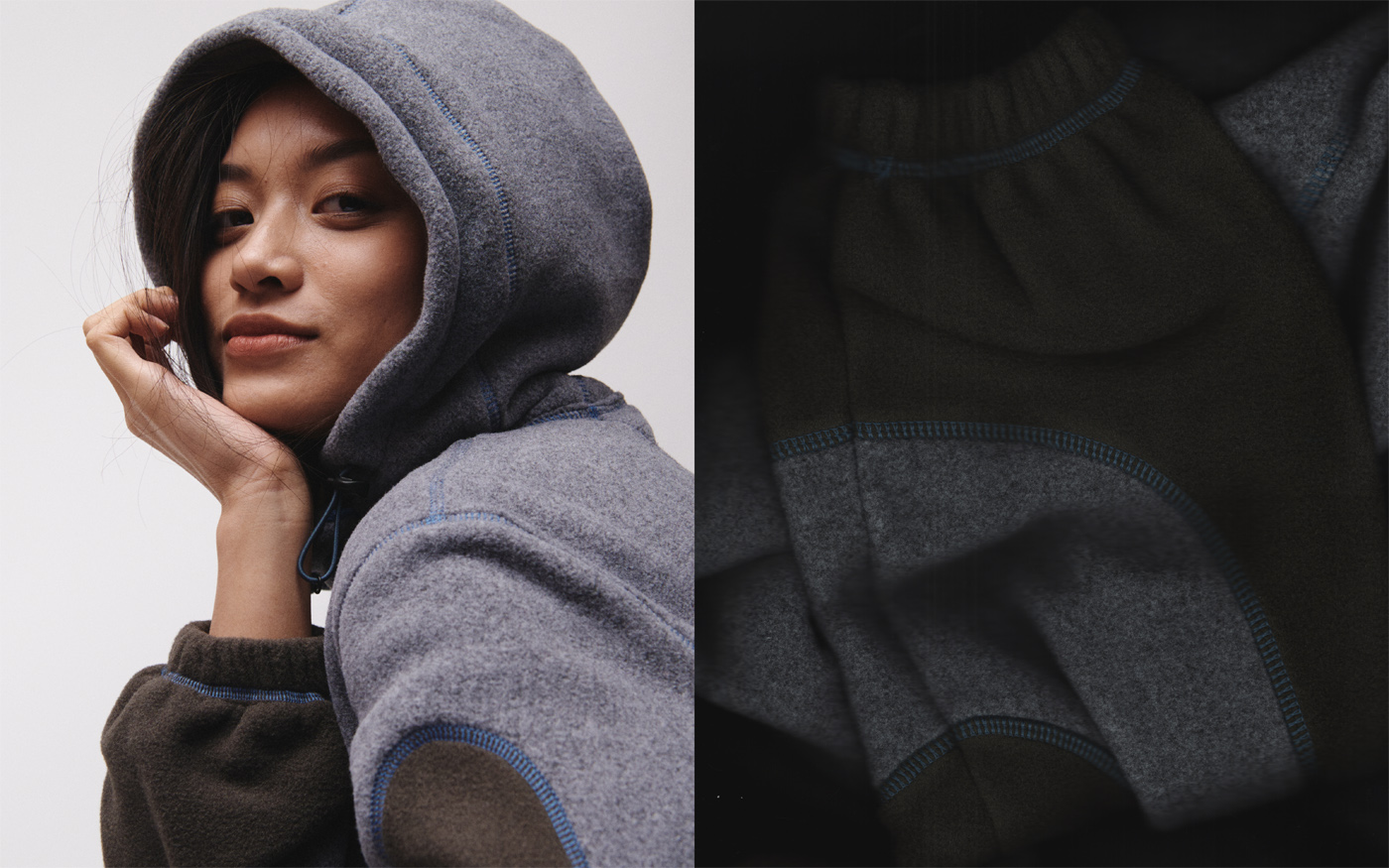
GAIA hoodie made of Polartec fabric
— And what about fashion weeks?
Masha: Actually, we don’t really like this format and don’t consider it appropriate for us, because we’re not just about the picture, not about fashion in the classic sense. And we didn’t want to use even this classic seasonality with collection releases, we were releasing drops on the occasions that were interesting to us. The classic way doesn’t appeal to us too much. We are more mutants, after all, and we like ourselves that way.
«We don’t have a markup because of the brand, we have a material and intellectual component»
—The price of O(FourFour) clothes isn’t low. When brands do not explain to the audience what the price is, it can cause a sharp reaction such as « Why should I pay so much for a Ukrainian brand?». How do you explain your price?
Masha: The very formulation of the idea, which sometimes arises in society, that paying for the Ukrainian brand means not paying, is destructive. It is such an inferiority complex that people impose on everyone else. We do not think that the Ukrainian brand should fit into any financial standard.
Vita: Generally, when we come up with an item and want to realize it, we think about how it can be made in the coolest way possible. We study everything ranging from what kind of cool technological fillings exist nowadays, what kind of fillings they are, who makes them, how to design them, what kind of special accessories and fabrics exist.
After this research, we choose among the top materials that the big brands work with. We never look for an alternative — we look for the best of the best fabrics. We work with biflex fabric used in surf/swim collections.
We work directly with a large factory in Italy, we go there, we transport, we clear customs. And in order to make a bodysuit, we have to order fabric, lining, accessories, work with quality technological equipment, and it is a very complicated process. Most of our fabrics are not represented in Ukraine, we have to bring and search for everything, not to mention the intellectual component.
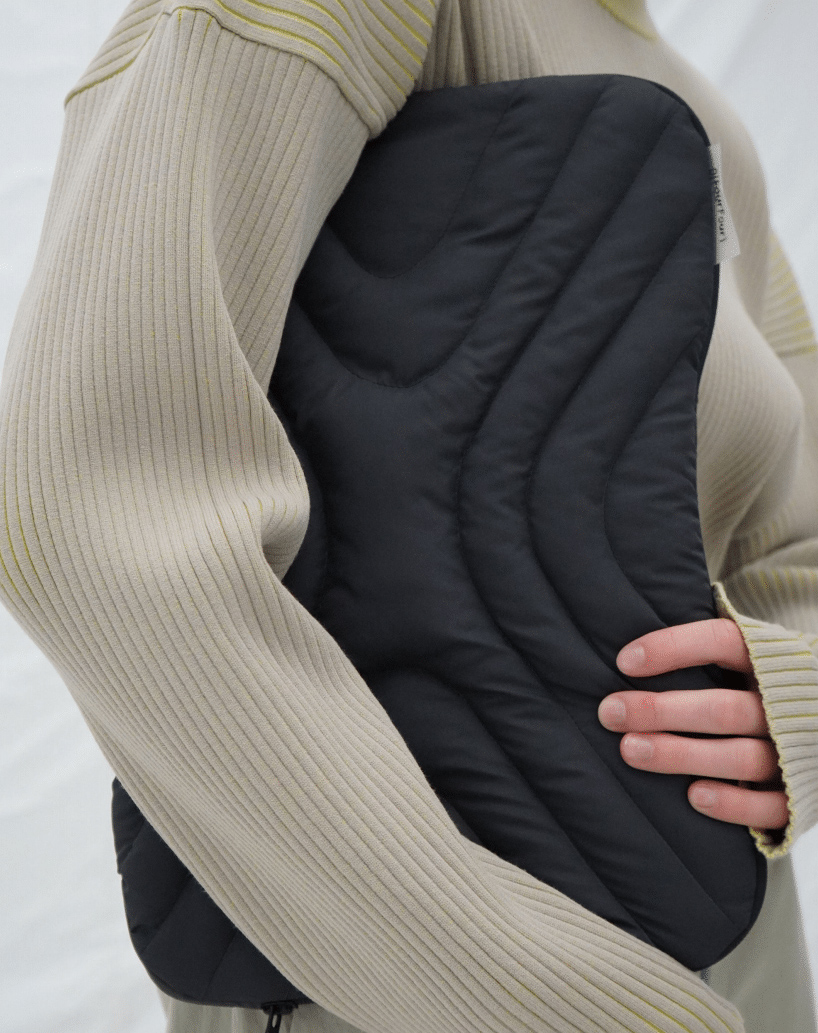
SILEX laptop bag made of 100% recycled polyester
When it comes to the cost of production, we have a clear rule. If the seamstresses or technologists say that a certain work requires six hours instead of four, we pay for six, and we never say something like: «There’s a war in the country, so work for three kopecks». We try to make sure that everyone involved in our process is happy.Any contractors we work with can attest to that. We choose the best print option, and in general, when you create something complex from scratch, there will be a lot of trial and error. You can’t make a vest the first time. Our vest had eight prototypes.
Masha: This vest is assembled from individual parts by hand and stuffed with down.

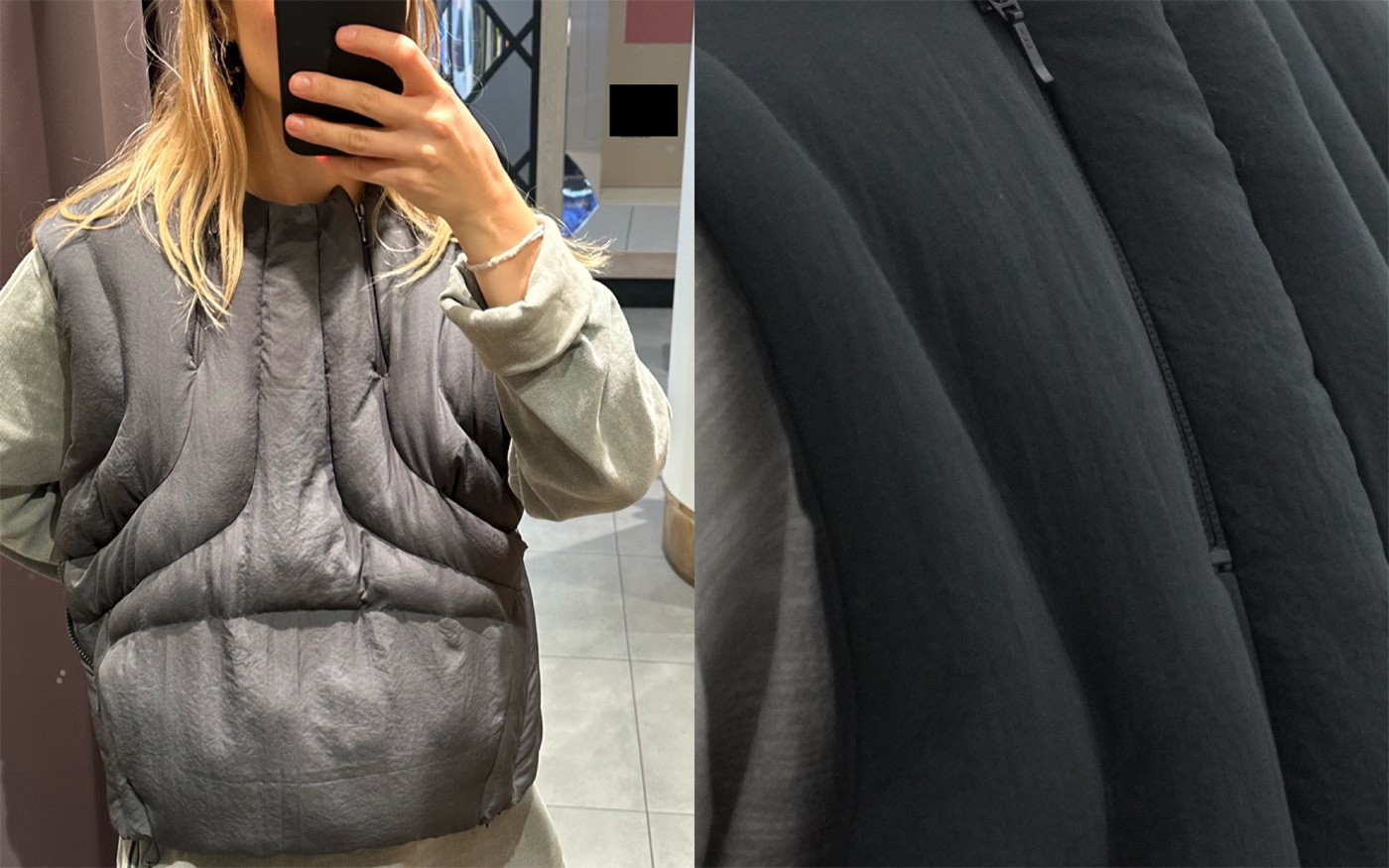
Process of making a THOR vest
— What price segment do you consider your brand to be?
Vita: Probably the middle segment, but we have the kind of clothes that you want and are willing to save up for. Our team also buys our clothes, we get in line for them.
Now it just so happens that everything went up 40% because of the exchange rate difference, not because of our desire. That is, if you subtract 40% from the cost of our vest, it will not be as terribly expensive as it may seem. There are processes that are beyond our control.
We have a sweater in the last drop, and when the question arose as to which yarn to choose, we came to the conclusion that the best one for us was Italian, but it was four times more expensive than Turkish. We tried both yarns and realized that if we gave life to this sweater, it would only be made from Italian yarn. Or we wouldn’t have it at all, because that’s where the compromise begins.
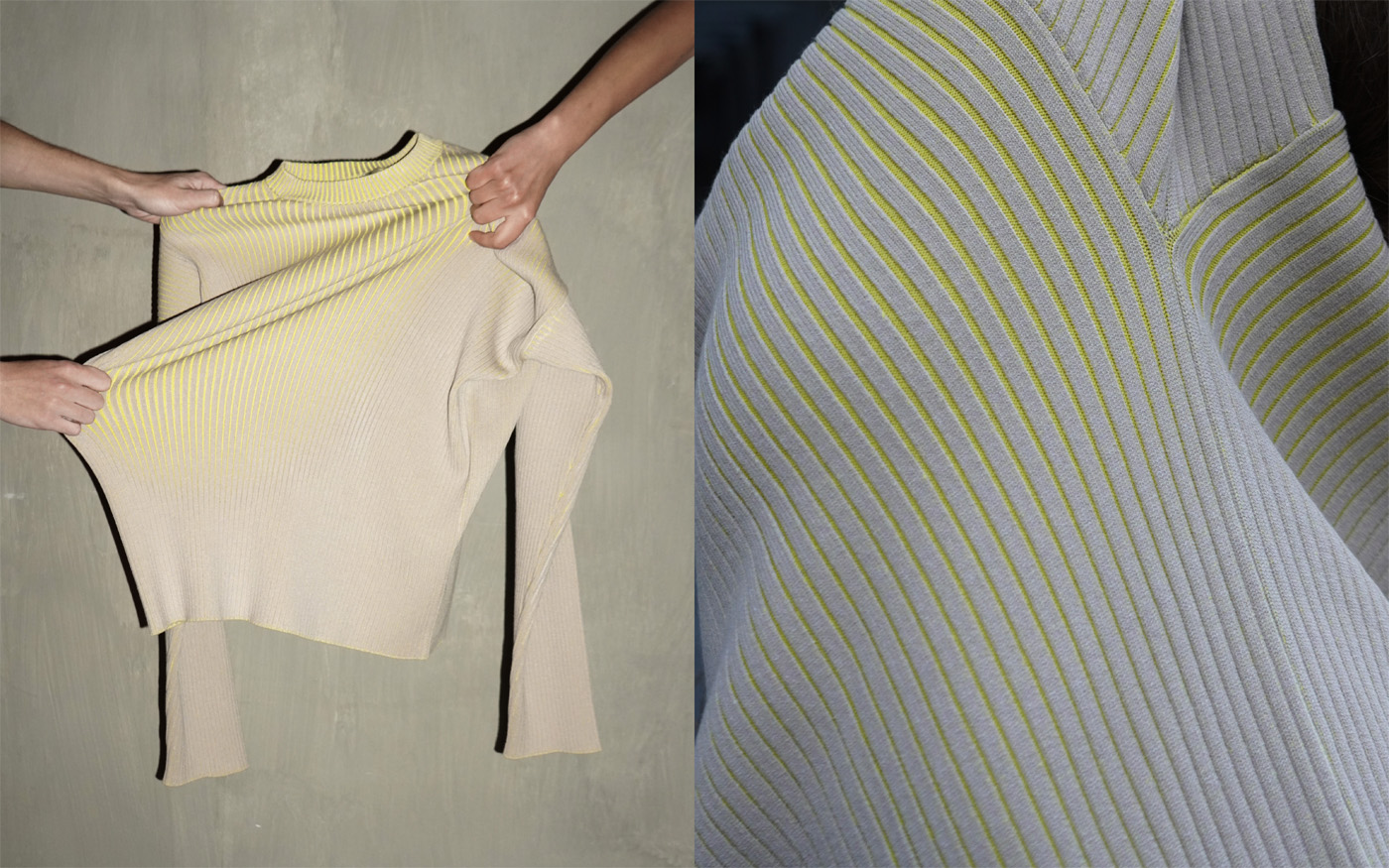
A RESS sweater made of Italian yarn that shows a green-yellow color while stretching
Masha: Our work process has changed slightly. If before we came to the constructors with a vision of what we wanted, and they made the items to try out, then during the creation of this drop, I sat at the table with the constructor, and we made patterns together, although I am not a constructor at all. Our immersion in constructing has multiplied, we never had any ambition to get into this process, but now we see how different it looks. I think the imposter syndrome I have allows us to do non-obviously original items and approach it from other angles.
And that’s what happened with the pants from the last drop, which are made super wrong in terms of construction: they have no side straight seams and can be folded like origami. It takes some sound ignorance and courage to do it the way no one else does, not by the rules.
Vita: To summarize, I think our prices are as honest, justified and affordable as possible. You pay more for the cost of production when you buy Ukrainian clothes. And when you pay for an international product, the marketing budget is probably 90% and the cost price is 10%; but 50% of the price of our products is a cost price.
Masha: We don’t have a markup because of the brand, we have a material and intellectual component.
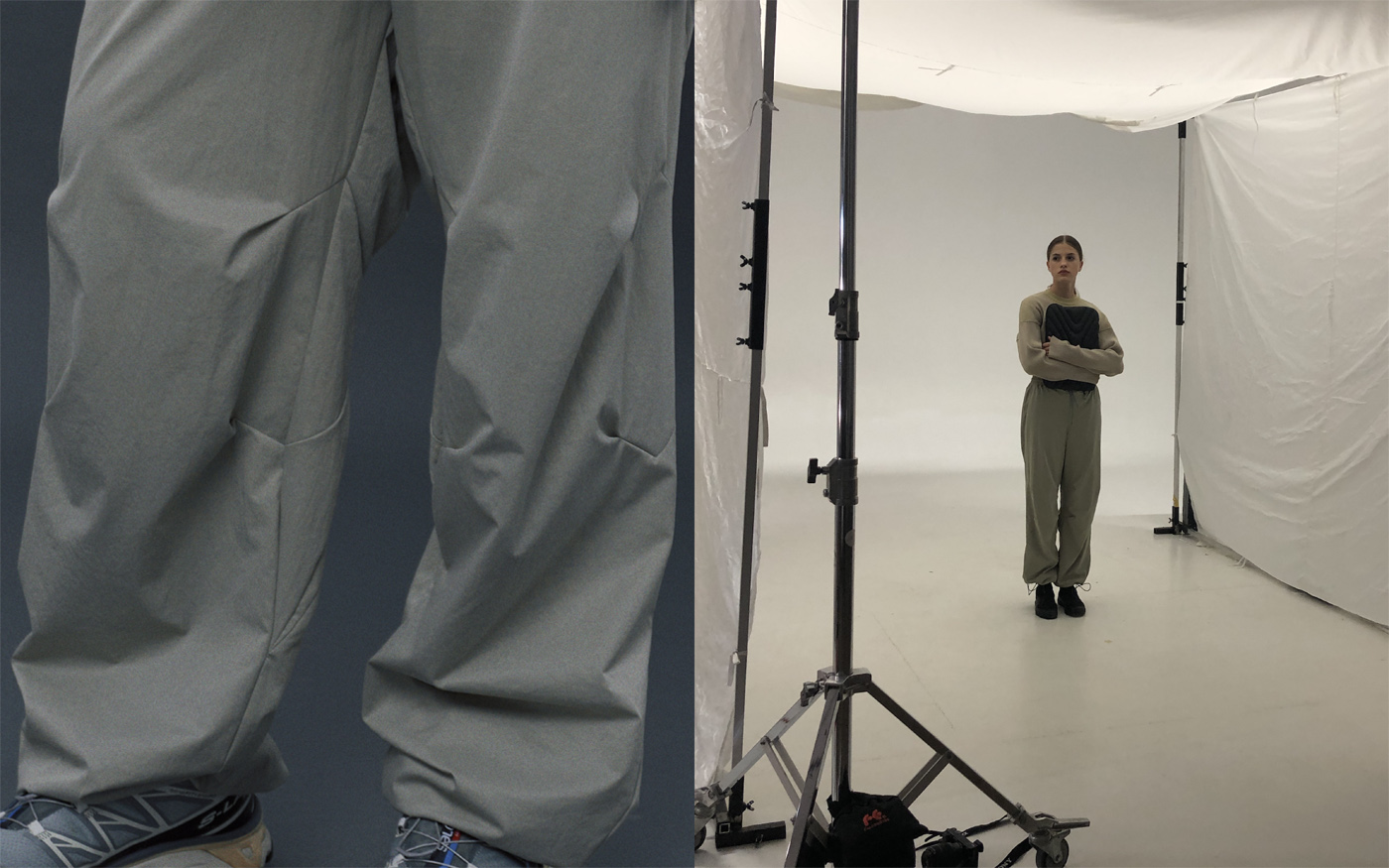
ORI pants that have a complex origami cut
«We try to create designs with no temporal context»
— Do you have any items that your audience didn’t like?
Masha: I think it’s our fitness line. At one point we tried to go a little more into fitness clothing territory, with longsleeves and leggings and cycling shorts. We thought about making clothes for the gym, but in the end we realized that our strength wasn’t in making cool basic clothes. That’s what Nike, adidas and others are for, but we are more about complex and original designs.
People don’t come to us when they’re looking for simple, predictable items, but when they want to find something for themselves to enjoy or give as a gift. For us, functionality and material quality are the obvious minimum without which we don’t even begin to design an item, but we certainly don’t have enough of that, and we are interested in going as far beyond those limits as possible.
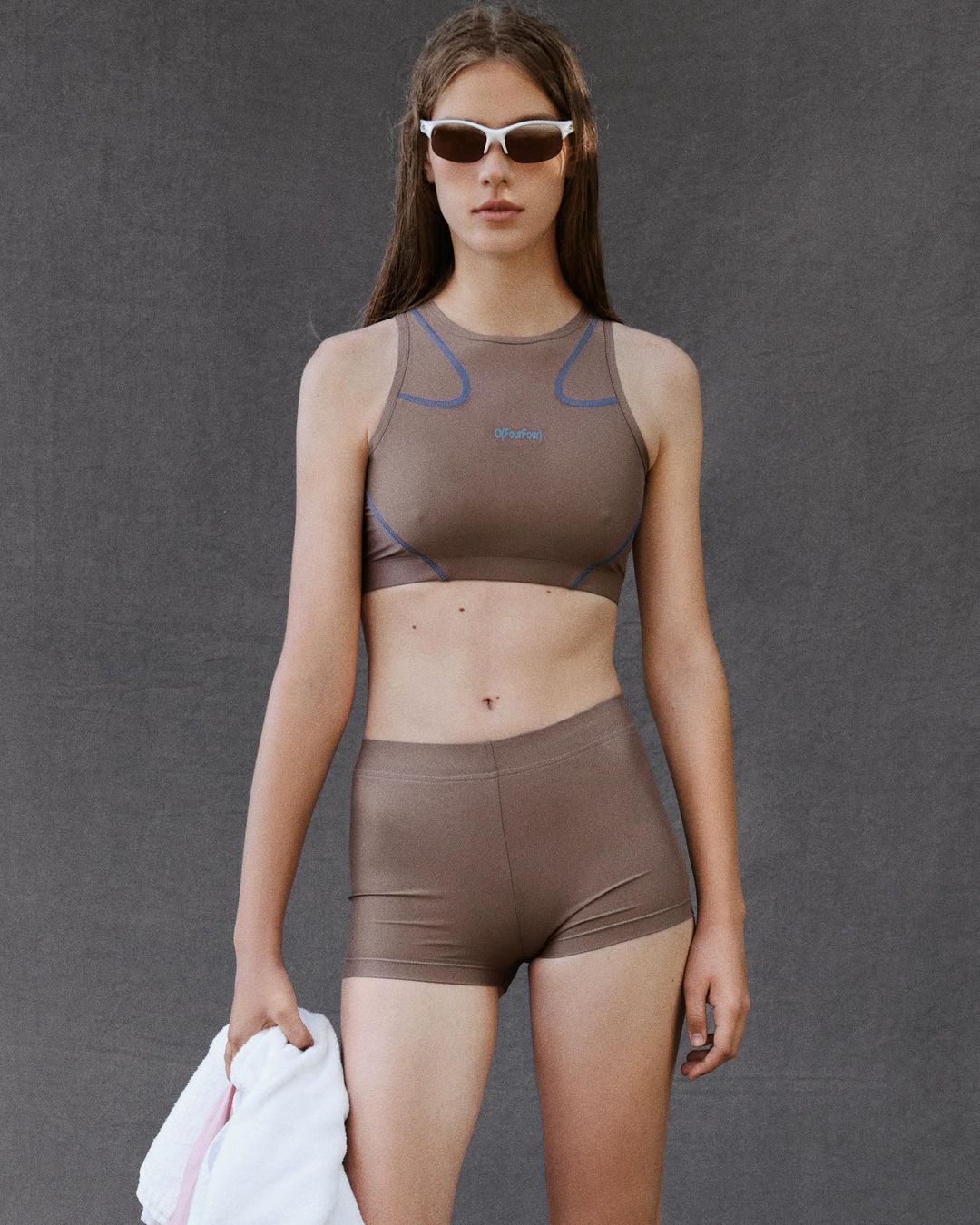
SAND SPORTY set
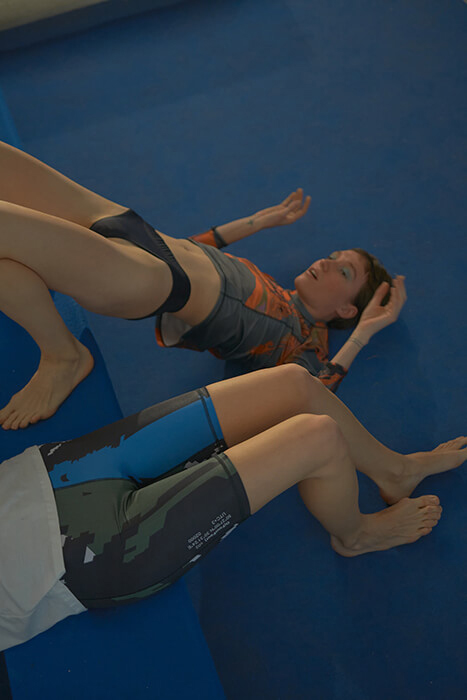

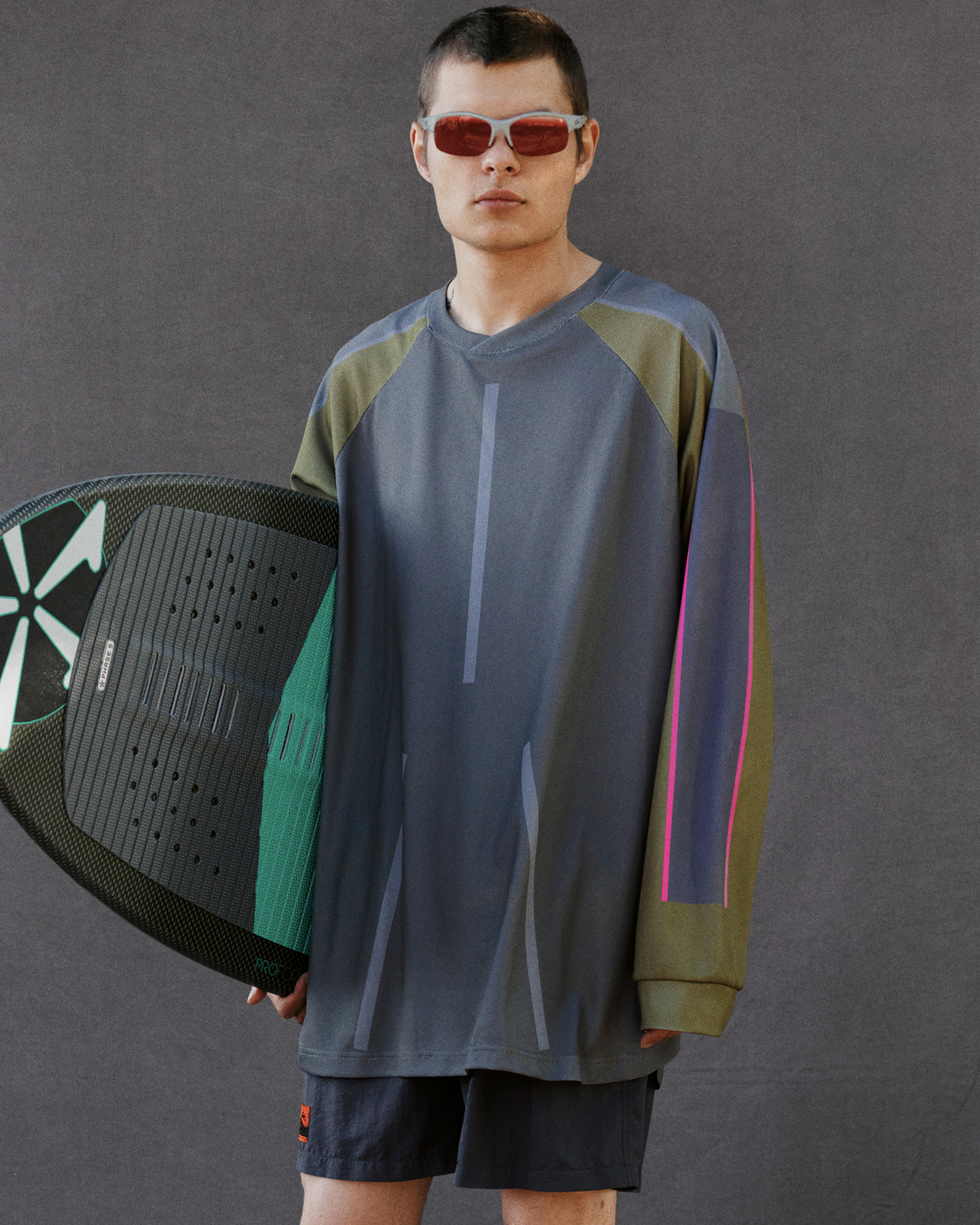
DUSTY longsleeve made of Coolmax Argentum fabric

Vita: We have some items that are upgraded every year. We look critically at whether or not we’re going to repeat something. And if we do, we have to make it even better.
We are very fond of one piece constructions (solid clothes, like bodysuit — note from DTF Magazine), but people have different physiques, so it is very difficult to «put» such clothes on a person so that they look cool and fit everybody. For example, we made the first monosuit and came up with a constructive way to put it on. We were in love with this product and did not take into account the fact that for people to «dive under the strap like a dolphin» is not very comfortable. They didn’t understand how to put it on at all, so they wrote to us and asked. And after a while we added a clasp, because clothes should be understandable, they shouldn’t set a precedent every time they need to be put on.
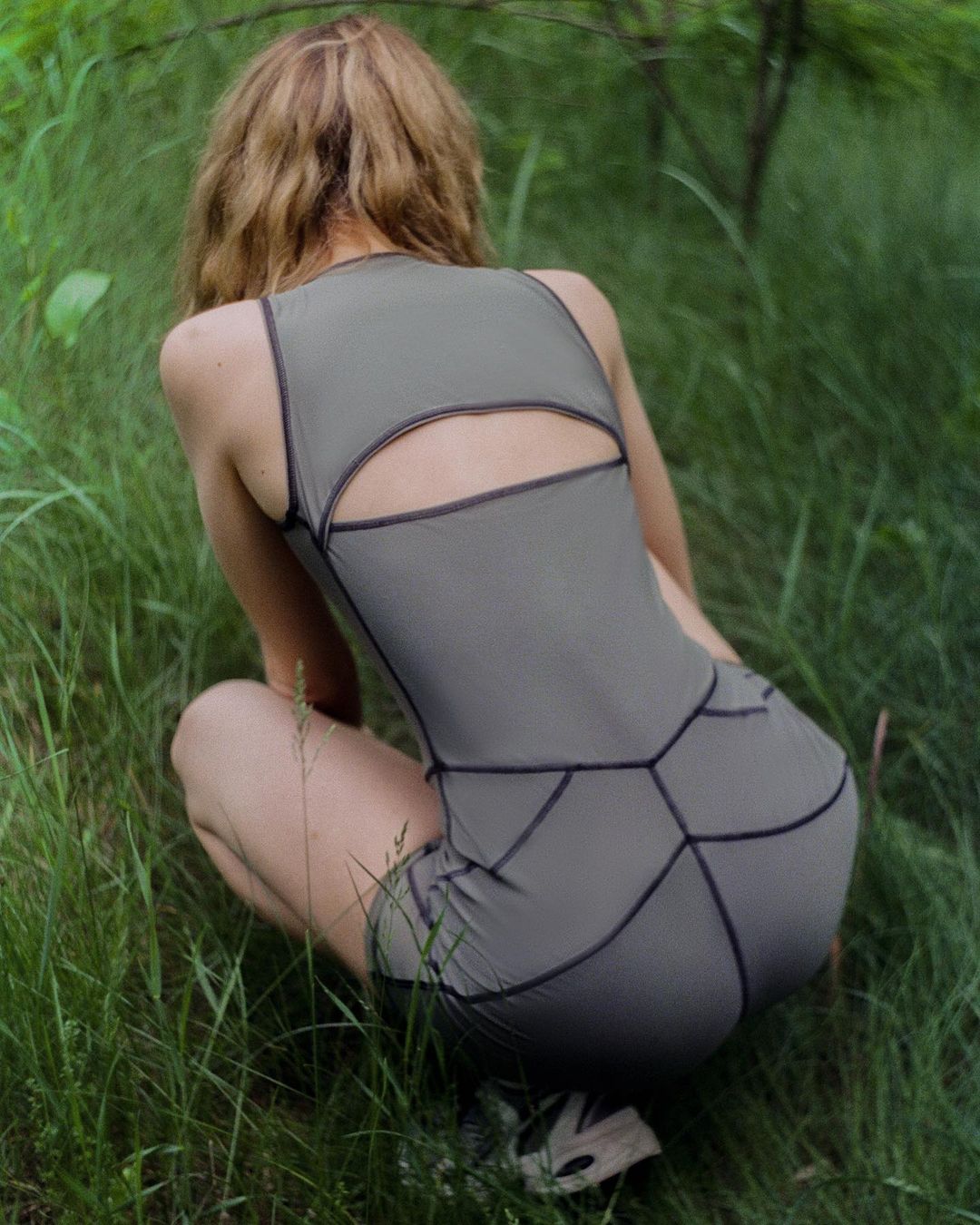
PAPARAZZI monosuit
— How do you see the further development of the brand, in what direction do you want to move?
Masha: We continue to do what we do best — we make clothes that we think support people in dark times. We look around, and it’s important for us to stay alive and vulnerable. Now we’re continuing to create summer drop, and I think we’re going to continue to build up the layers that we’ve had before. Ranging from second skin to what we call a warm layer, an airy layer, a moisture-wicking layer. We like to work with these different layers in relation to the environment. And I think we’re going to continue to emphasize the city tourism line that’s represented in the winter drop, we’re going to develop it more in the summer items.
Vita: We have crystallized this term, «city tourism», for ourselves. It’s when you spend a lot of time actively in the city and you need comfortable clothes in which you can, roughly speaking, both sit down and put your leg up. Or if you’re walking on Trukhaniv Island, you can put on a bodysuit and go kayaking, and then put on cargo pants.
But we don’t set strict boundaries for ourselves at all, because as we said, we resonate with the fact that we influence the environment and the environment influences us. Now we feel like we’d like to immerse ourselves in this city tourism line, make more clothes that you can use to complete your closet for years and nothing will happen to them. They’re out of fast fashion and made of very durable materials.
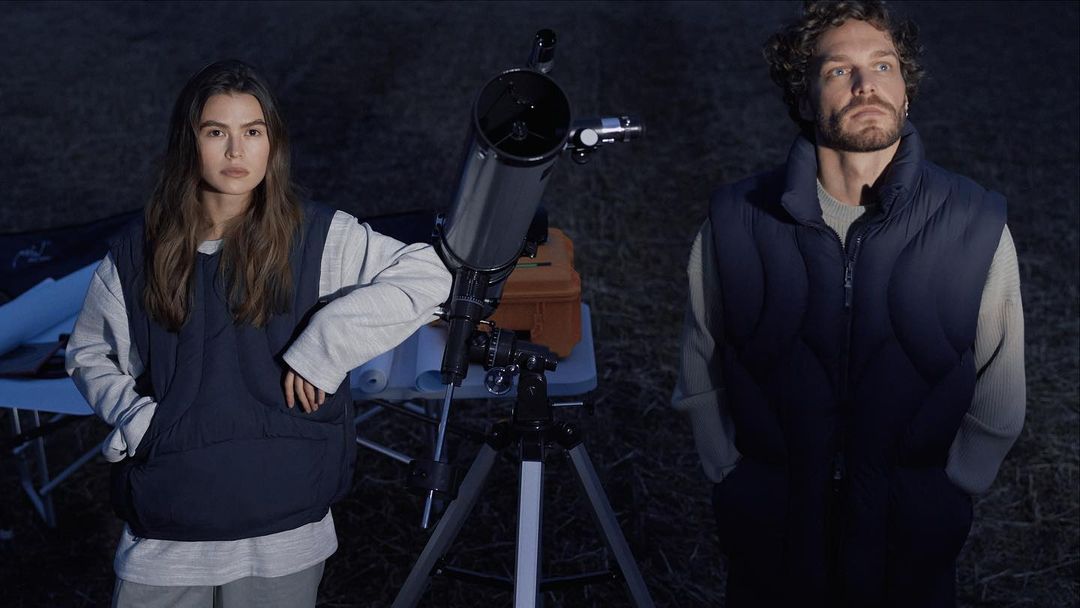
Осінньо-зимовий дроп EXTENDEXTEND Fall/Winter dropнай
Masha: I would also like to add about consistency, the principles of which we try to use in the design, in addition to the choice of fabrics and materials.
We are not tied to trends, we try to create designs with no temporal context and no stylistic period, so it’s not clear if it’s done in 2022, 2001 or 2030. We like to be looser with a wider field of interaction. Because beauty and aesthetics is definitely not the only thing that exists today, we’re not interested in working in that territory.
And as for the swim line and city tourism. Our clothes are technological, quick drying, compression, they can be stretched four ways, and so on. But it’s very important to us that they’re not highly specialized and disciplinary, that they can be used in different ways. They’re not suitable for lying on the couch, but they’re suitable for everything else: you can wear them in the city, you can wear them to parties and sit in cafes, they’re really cool for summer because you just don’t feel them on you. I was glad to see the girls in our bodysuits in the club on Kyrylivska Street: they feel great, they are super comfortable, they are beautiful. That’s what we wanted, we wanted the swim line to be not just for water. We like to make clothes that can be used in different ways (and by that we mean a pretty wide gradient ranging from pool to date night), and in which you can feel as comfortable and good as possible in different conditions.
